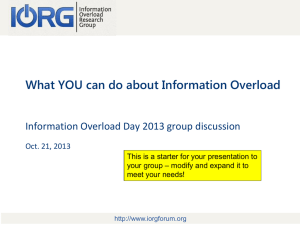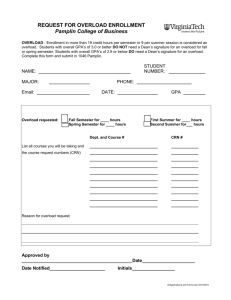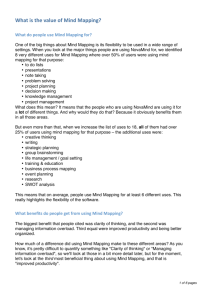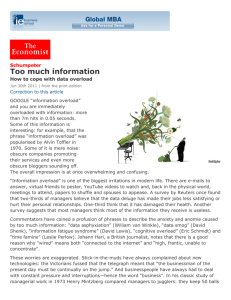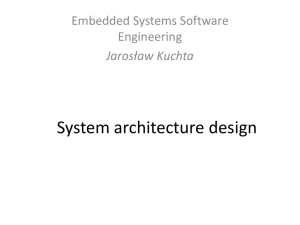Diameter Overload Control Design Team Report
advertisement
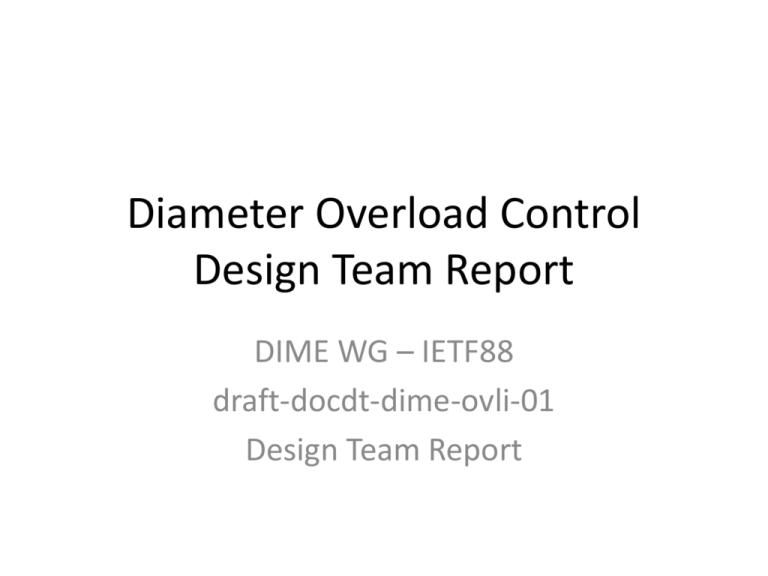
Diameter Overload Control Design Team Report DIME WG – IETF88 draft-docdt-dime-ovli-01 Design Team Report Background • A design team formed after IETF87 to work on the Diameter Overload Control solution proposal – Jouni Korhonen, (Hannes Tscofenig), Steve Donovan, Ben Campbell, Nirav Salot, Lionel Morand, Susan Shishufeng, Maria Cruz Bartolome, Martin Dolly, Jean-Jacques Trottin, Ulrich Wiehe • Mail list doc-dt@ietf.org , archives available • Weekly calls • One f2f meeting after the 3GPP CT4#62bis • Solution wanted/needed for 3GPP Release-12 Main Solution Principles • Piggybacking – Can be used on top of existing applications.. – The context of the overload control is determined by the “underlying” application the overload control is piggybacked on. • Capability announcement – “Client” announces what it is capable of and “server” does the same.. At least one of the capabilities have to match. • Extensibility – New functionality, algorithms, etc can added and registered with IANA.. and then announced as new capabilities. Main Solution Principles cont’d • Default (loss-like) algorithm and traffic abatement – Left for the “client” to figure out based on the Overload Report sent by the “server”. – The report is only a “server” indicated “reduction percentage”. • The “endpoint” principle – Overload control is considered as an overlay on top of an arbitrary Diameter deployment. – The overload control information is exchanged two between “endpoints” capable of overload control solution. – Specific “reacting node” and “reporting node” roles, not to tie the solution specifically to “client-server” solution. Decisions.. • The Diameter overload control “baseline solution” is not going to fulfill all requirement document requirements: – Separate documents will be needed for features that did not fit into the base line.. Take the agent overload as an example. • Intentional separation between the overload reporting and overload control: – The baseline only solves the reactive reporting part i.e. the “Diameter Overload Indication Conveyance”. – Pro-active overload controlling left for future work. • No explicit algorithm identifiers – The algorithms can be deducted from the capability announcements and per capability/feature specific AVPs. Open Issues and parts under discussion in -01 • Several “bigger” open issues – Extensibility and capability announcement details to be nailed down. – Destination-Realm and Destination-Host routed requests details missing. • Missing – Basic overload report processing description missing/stale for the reacting and reporting endpoints (e.g. for client/server). • Features under discussion – Inserting throttling information into requests. • Loads of cleanup for -02 ahead. Issue: Extensibility and capability announcement • Plain feature vector is not really enough – Change the “flag vector” to a grouped AVP. – Need to add timestamp/sequence number to indicate validity of the announced features. • Remove the existing “negotiation” part – It is a bidirectional announcement of capabilities. – Obviously at least one of the announced capabilities need to overload for endpoints to be able to perform overload control information conveyance.. Missing: overload report processing • Just write it down.. • Would “detail” the use of the default algorithm.. Issue: Destination-Realm and -Host routed requests details • Proposal sent to the list by Ben.. • Review it and tell whether it is acceptable Proposals under discussion: throttling information into requests • A request would contain information that a specific request survived throttling done by the reacting node. • Indicates to on path nodes / reporting node that someone is _doing_ traffic abatement.. – Additional knowledge to announced features.. • Not decided whether this is needed for the baseline. Next step.. • Ship -02 asap incorporating the resolution for known issues and filling the missing text pieces. – Above changes could also be incorporated to WG adopted -00 revision.. • Adopt as a WG I-D ? – We admit -01 is still incomplete but from the design team point of view mature enough to serve as a base for the baseline solution. – We need to get a WG solution document out of the working group fast that our “waiting customer” (3GPP) can proceed with their work. Comments / Questions?
